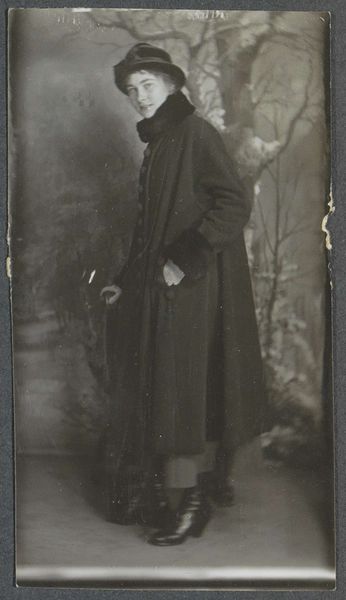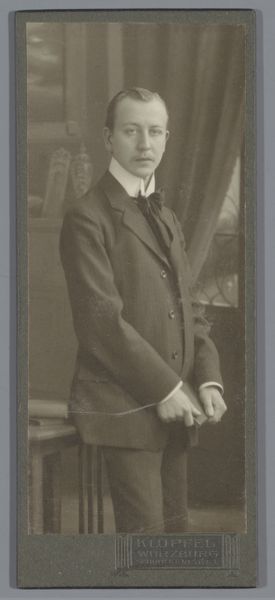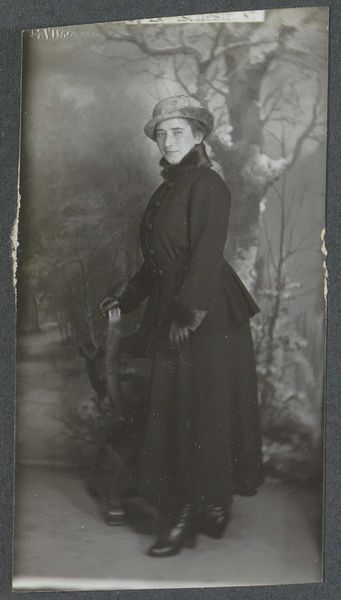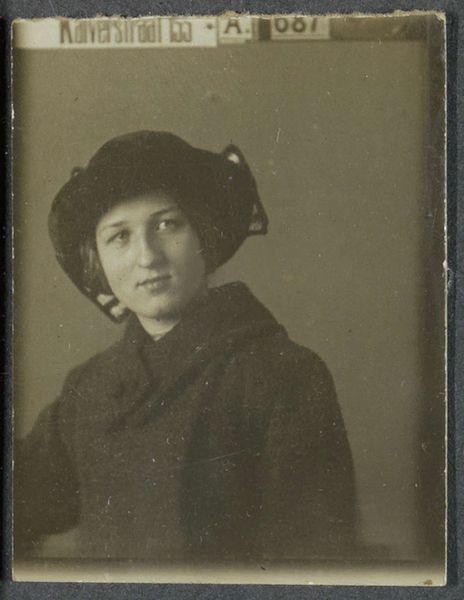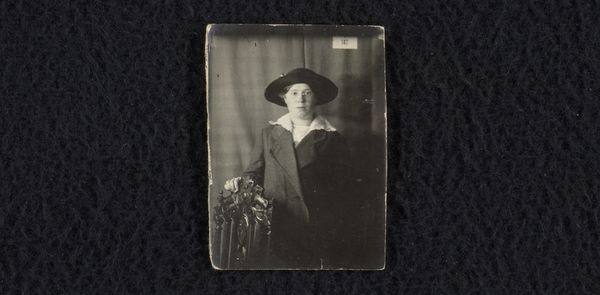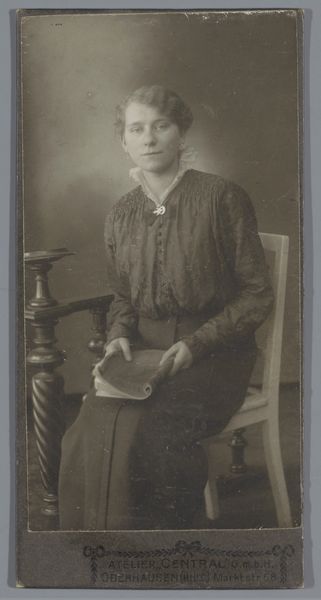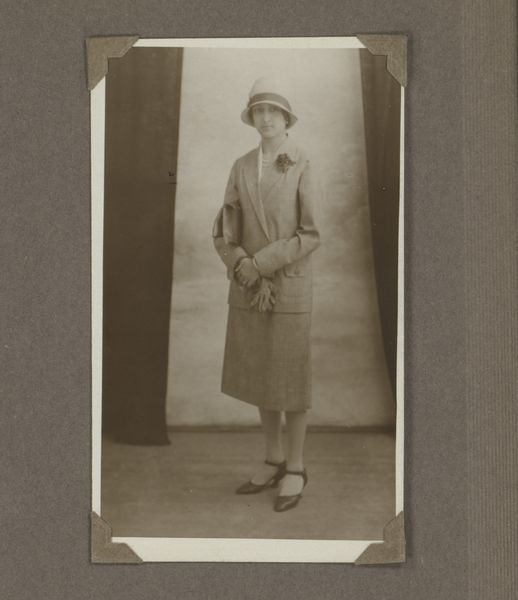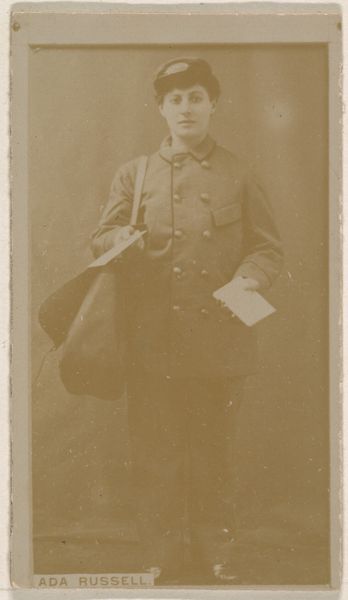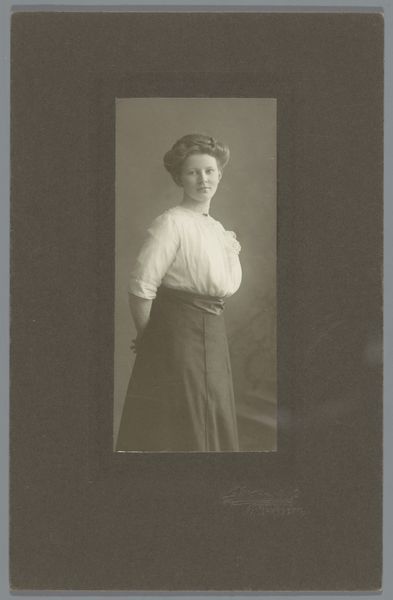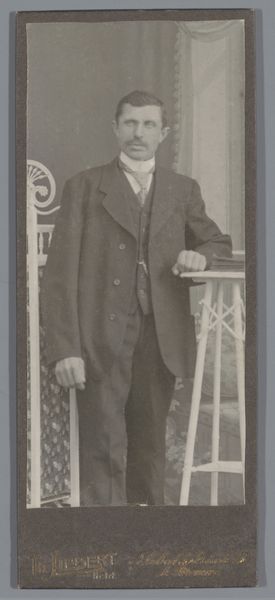
photography
#
portrait
#
still-life-photography
#
photography
#
realism
Dimensions: height 80 mm, width 44 mm
Copyright: Rijks Museum: Open Domain
Curator: We’re looking at a photograph here—the museum card tells me its title is *Portret van een vrouw met een hoed*, or “Portrait of a Woman with a Hat,” created around 1921. It's rendered in the Photo Couleur style. Editor: The mood is...stark. Austere, almost. The composition feels very formal, very posed, centered on the woman, naturally, against what looks like a hand-painted backdrop of leafless trees. Curator: The material quality is also interesting here—this photographic method would have likely involved significant handwork in the darkroom to achieve the subtle coloration and tone. We're not simply seeing a snapshot, but a carefully crafted image where labour and the specific techniques are foregrounded. Consider what such portraiture represented to the sitter in 1921—an aspirational or sentimental marker of one's identity, within a particular economy of image production and consumption. Editor: Agreed. Although the setting looks somewhat theatrical, I think the realist approach contributes significantly to the artwork’s message, offering us what might be considered to be a truthful likeness. See how the lighting catches the textures of the tweed and creates those highlights that delineate her face so precisely? What about the tonal range and controlled composition? It speaks to the careful artistry of capturing both likeness and character. Curator: The social context also strikes me here. During the early 1920s, mass production and changing cultural mores impacted not just materials, but the democratisation of image-making itself, expanding consumer culture. This form of studio portraiture was available, accessible, but required careful presentation, as well as the patronage that recognised photographic practices as art. Editor: To me, the details speak volumes, visually—her composed facial expression, the plain yet well-tailored clothing. It's all quite contained, speaking more about interiority rather than outward show. I do wonder about that landscape; that is more symbol than place, after all. Curator: I’m struck again thinking about the image’s journey through different forms of consumption, through digitization and online collections. Now the subject's presence enters spaces wholly outside their intent. Editor: Indeed. The enduring presence of this photograph continues to offer formal, lasting proof about human engagement across time.
Comments
No comments
Be the first to comment and join the conversation on the ultimate creative platform.
